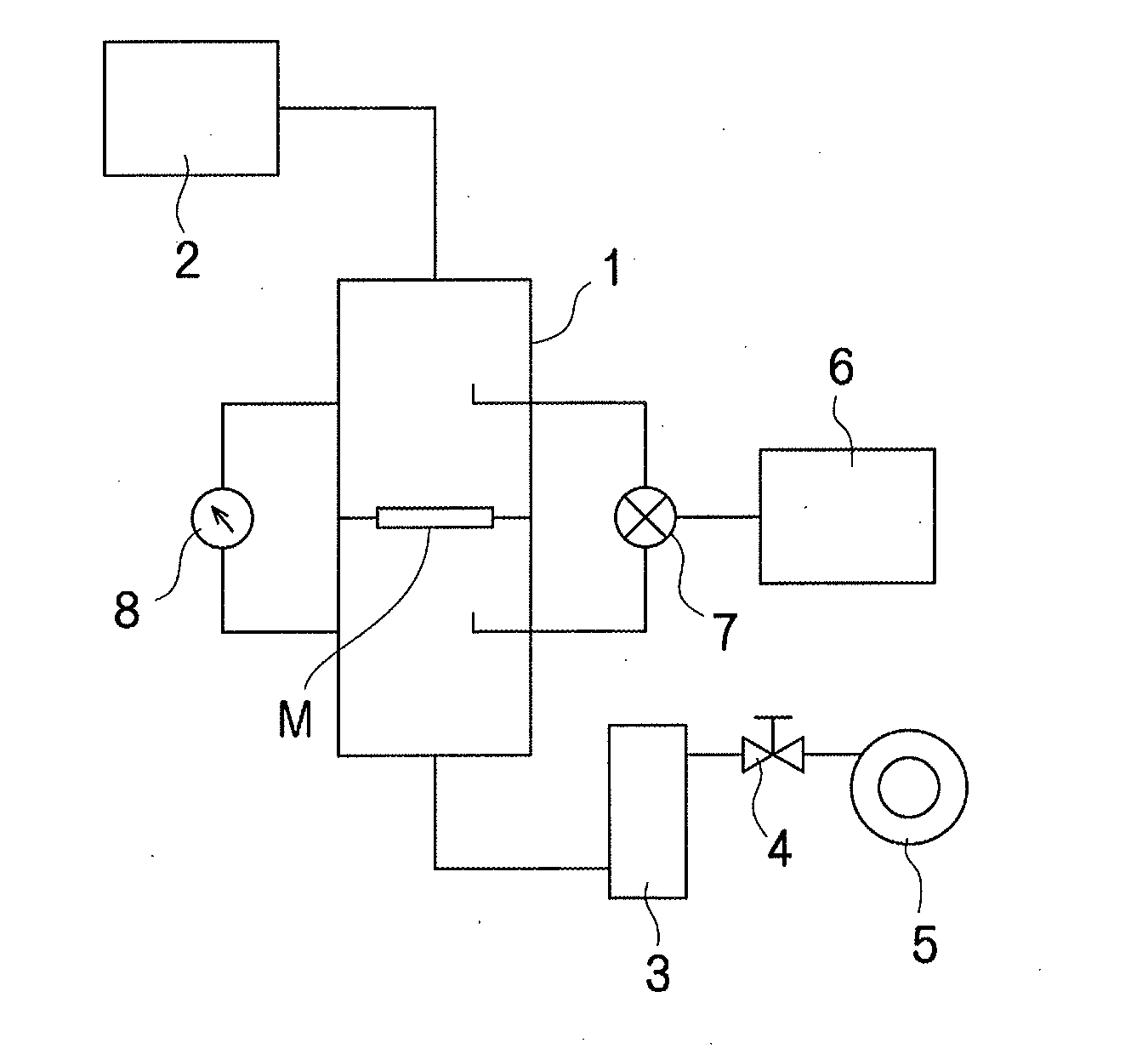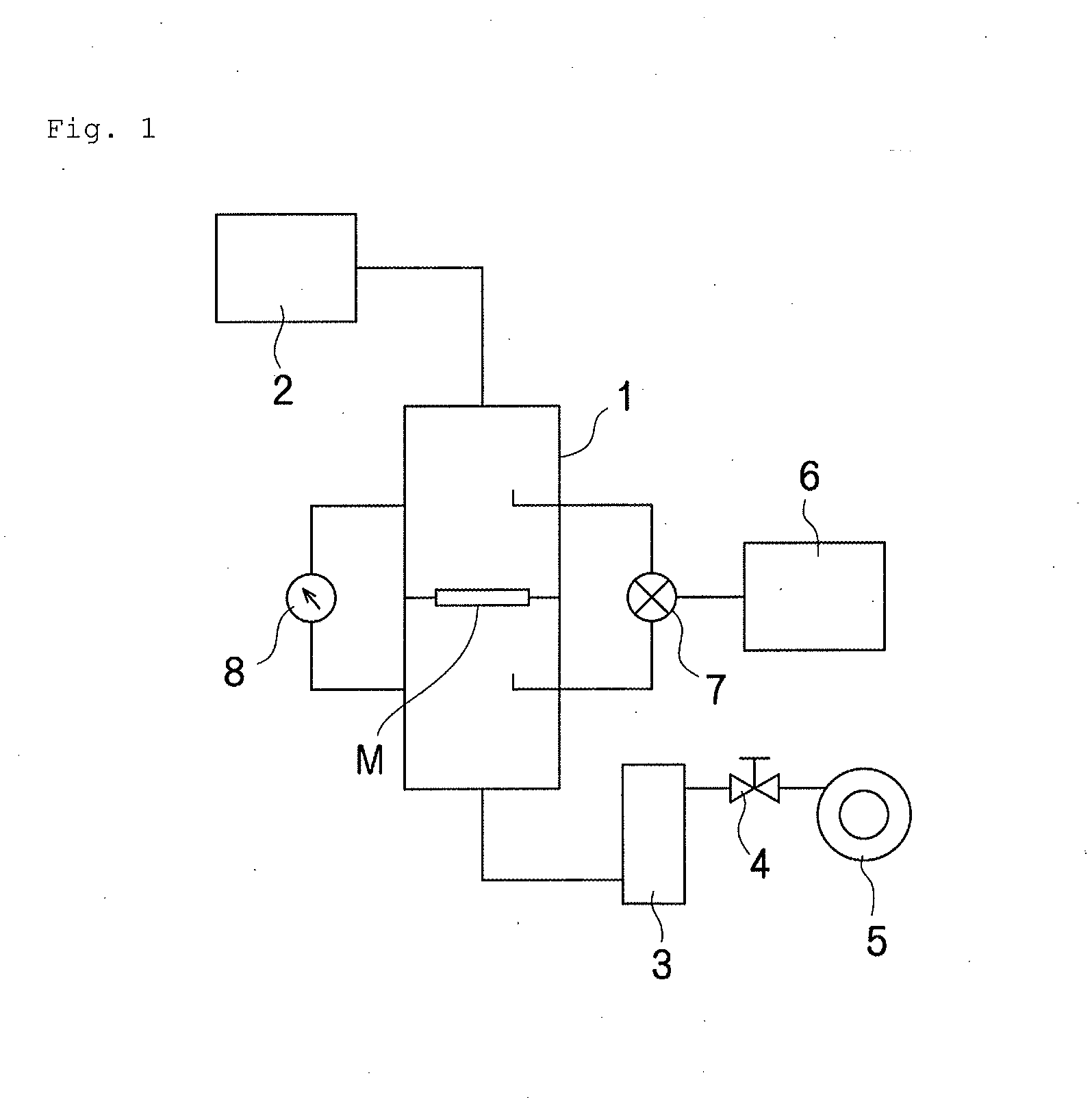Mixed-fiber nonwoven fabric, laminated sheet and filter, and process for producing mixed-fiber nonwoven fabric (as amended)
a nonwoven fabric and laminated technology, applied in the field of mixed fiber nonwoven fabric, can solve the problems of reduced pores between the fibers of the resulting nonwoven fabric, low pressure drop, and insufficient collection efficiency of very fine fibers, so as to reduce the polymer extrusion rate per hole, and reduce the melt viscosity
- Summary
- Abstract
- Description
- Claims
- Application Information
AI Technical Summary
Benefits of technology
Problems solved by technology
Method used
Image
Examples
example 1
[0099]A polypropylene (PP) resin containing 1% by mass of “CHIMASSORB” (registered trademark) 944 (manufactured by BASF Japan Ltd.) (melting point: 163° C., MFR=860 g / 10 min) was used as the polyolefin resin component A, and a polybutylene terephthalate (PBT) resin (melting point: 225° C.) was used as the high melting point resin component B.
[0100]A meltblown nonwoven fabric was produced with an apparatus including two extruders and gear pumps, a melt-blown die for mixed-fiber spinning having two types of holes (a, b) (hole diameter of (a): 0.25 mm, hole diameter of (b): 0.6 mm, number of holes (a): 95, number of holes (b): 20, die width: 150 mm, (a)-(a) hole pitch: 1 mm, (a)-(b) hole pitch: 2 mm, hole arrangement: the holes (a, b) were arranged in a row so that five holes (a) were interposed between two holes (b)), a compressed air generator and an air heater, a collecting conveyor, and a winding system.
[0101]Resin pellets of the component A and resin pellets of the component B wer...
example 2
[0105]A nonwoven fabric was produced in the same manner as in Example 1 except that a polypropylene (PP) resin containing 1% by mass of “CHIMASSORB” (registered trademark) 944 (manufactured by BASF Japan Ltd.) (melting point: 163° C., MFR=1,550 g / 10 min) was used as the polyolefin resin component A, that the mass ratio (%) of the polyolefin resin component A to the high melting point resin component B was 60:40, that the extrusion rate per hole (a) was 0.28 g / min / hole, that the extrusion rate per hole (b) was 0.90 g / min / hole, that the compressed air temperature was 305° C., and that the compressed air pressure was 0.06 MPa.
[0106]The mixed-fiber nonwoven fabric obtained in Example 2 was subjected to heat treatment with a hot-air drier at a temperature of 175° C. for 5 minutes so that the polypropylene (PP) fibers were melted. The number average fiber diameter and the number of the fibers of the nonwoven fabric were determined to give the number average fiber diameter of the high melt...
example 3
[0109]A nonwoven fabric was produced in the same manner as in Example 1 except that a copolymer obtained by copolymerizing 11% by mole of isophthalic acid with a polyethylene terephthalate (PET) resin containing 0.3% by mass of titanium oxide (melting point: 230° C.) was used as the high melting point resin component B, that the mass ratio (%) of the polyolefin resin component A to the high melting point resin component B was 41:59, that the extrusion rate per hole (b) was 1.01 g / min / hole, and that the compressed air temperature was 305° C.
[0110]The mixed-fiber nonwoven fabric obtained in Example 3 was subjected to heat treatment with a hot-air drier at a temperature of 175° C. for 5 minutes so that the polypropylene (PP) fibers were melted. The number average fiber diameter and the number of the fibers of the nonwoven fabric were determined to give the number average fiber diameter of the high melting point fibers.
[0111]Separately, the mixed-fiber nonwoven fabric obtained in Exampl...
PUM
| Property | Measurement | Unit |
|---|---|---|
| length | aaaaa | aaaaa |
| diameter | aaaaa | aaaaa |
| diameter | aaaaa | aaaaa |
Abstract
Description
Claims
Application Information
 Login to View More
Login to View More - R&D
- Intellectual Property
- Life Sciences
- Materials
- Tech Scout
- Unparalleled Data Quality
- Higher Quality Content
- 60% Fewer Hallucinations
Browse by: Latest US Patents, China's latest patents, Technical Efficacy Thesaurus, Application Domain, Technology Topic, Popular Technical Reports.
© 2025 PatSnap. All rights reserved.Legal|Privacy policy|Modern Slavery Act Transparency Statement|Sitemap|About US| Contact US: help@patsnap.com



